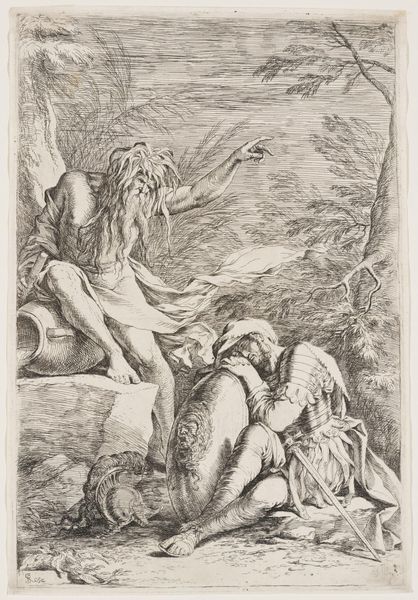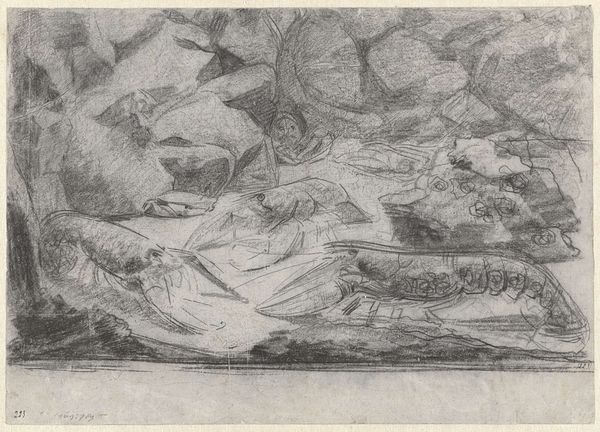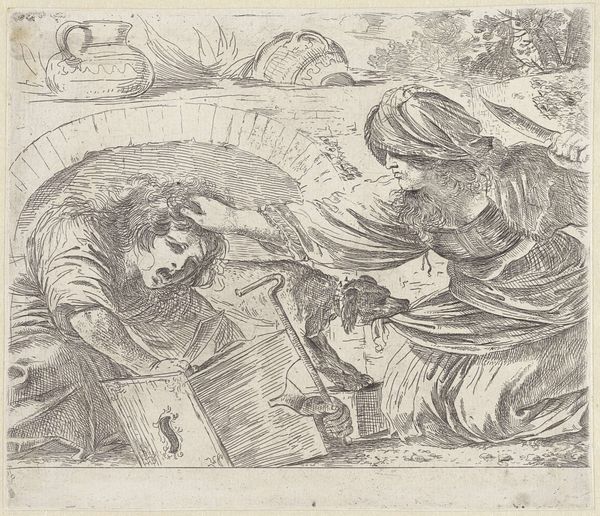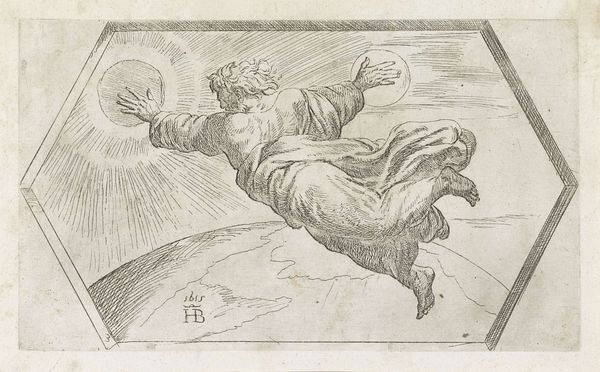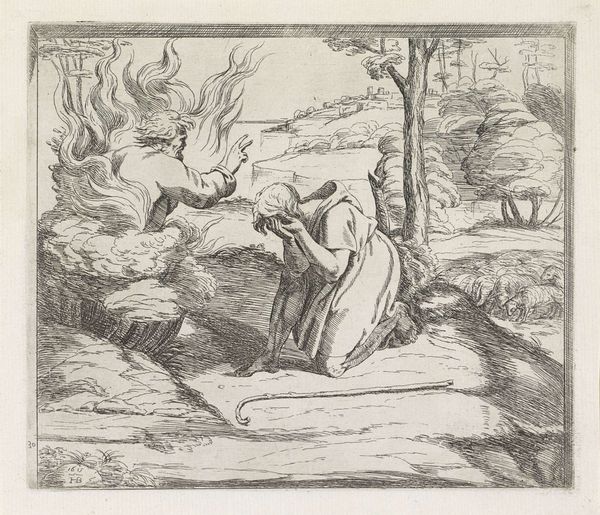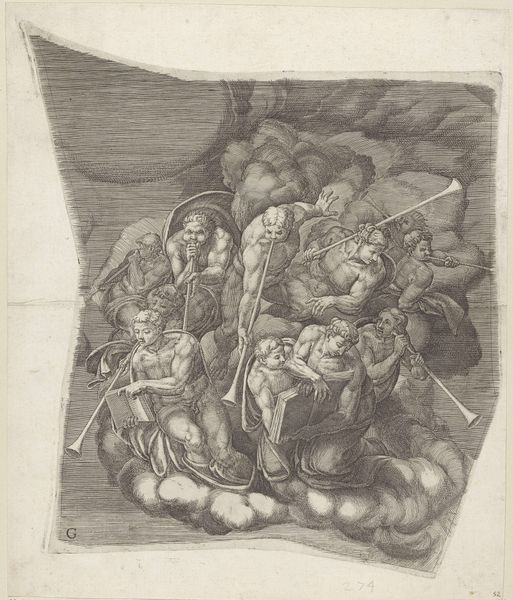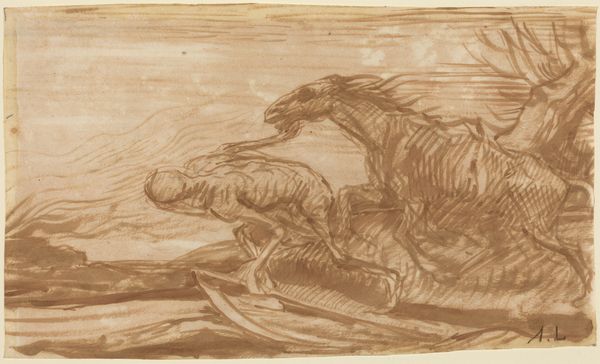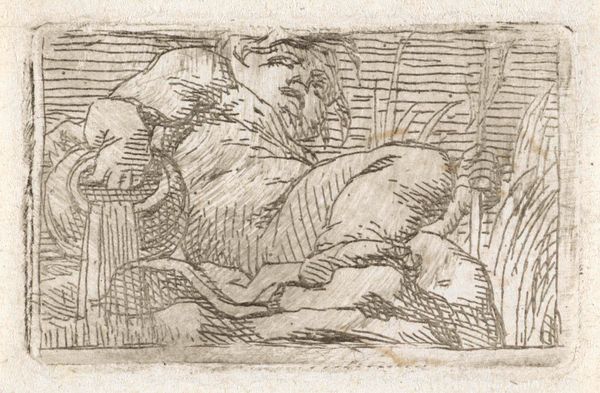
print, engraving
#
baroque
# print
#
figuration
#
line
#
history-painting
#
engraving
Dimensions: height 138 mm, width 221 mm
Copyright: Rijks Museum: Open Domain
Curator: What a striking image! I immediately sense a struggle for dominance. Editor: We're looking at "God Separating Light from Darkness", an engraving by Orazio Borgianni from 1615. The Rijksmuseum holds this print. Notice how the scene is confined within this unusual hexagonal frame, almost as if it were a geological cross-section or some piece of crystalline structure. Curator: Indeed. The composition, although a bit crowded, is full of energy. You have this powerful figure amidst swirling clouds and what seems to be erupting flames, all rendered through an impressive network of lines, typical for an engraving. But tell me more, what social narratives can be unraveled from this artwork? Editor: This piece captures a pivotal moment of creation, when God's initial act literally sets the stage for all that follows. Given the period, this isn't just a religious statement. Remember the counter-reformation—an aggressive defense of traditional theology using, as we see here, carefully commissioned artwork to instill devotion and reaffirm social hierarchies. Consider that line, the physical act of engraving: it transforms religious dogma into a tangible commodity available to wider audiences. Curator: Yes, that’s crucial. How does the material—the engraving itself—influence the reception? Unlike painting, prints facilitated dissemination and potentially altered consumption practices and broadened the work’s reach outside aristocratic circles. Editor: Exactly! Furthermore, the theme speaks to larger intersectional considerations, especially how systems of belief define not just cosmos but the very social constructs of "light" and "dark," which have obvious and troubling applications concerning gender, race, and knowledge. We see, even here at creation, a template for later exclusionary narratives. Curator: Fascinating. The engraving medium gives "God Separating Light from Darkness" a powerful tangible quality, which would allow it to participate in some unique modes of thinking about identity and difference. Editor: Absolutely, I leave here considering how the artistic production mirrors larger dynamics of exclusion in both visible and symbolic form.
Comments
No comments
Be the first to comment and join the conversation on the ultimate creative platform.

